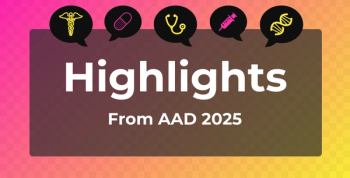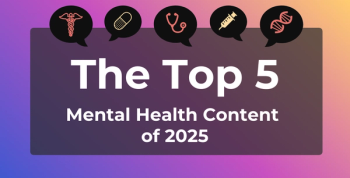
Cuts to PEPFAR Spell Detrimental HIV Outcomes in South Africa
Key Takeaways
- PEPFAR funding cutbacks could lead to increased HIV infections and deaths in South Africa, worsening the epidemic.
- The HIV care continuum would decline with reduced funding, impacting treatment and viral suppression rates.
HIV infections and deaths would increase dramatically should the United States cut back on funding for the President’s Emergency Plan for AIDS Relief (PEPFAR).
The fate of the President’s Emergency Plan for AIDS Relief (PEPFAR) has been uncertain, with conflicting narratives about the overall plan from the Trump administration regarding the funding for the program.1-3 However, any plans to further cut back on the funding going into PEPFAR could spell long-term effects on all HIV outcomes in foreign countries and potentially affect hundreds of thousands of patients in South Africa, according to a new study published in the Annals of Internal Medicine.4
The
A mathematical model, the Cost-Effectiveness of Preventing AIDS Complications-International model, was used to stimulate how the cutbacks would affect HIV programming. The model was used to simulate HIV programming from 2024 with no cutbacks (PEPFAR-100%), partial cutbacks (PEPFAR-50%), and complete cutbacks (PEPFAR-0%). The base analysis assumed that all funds were cut permanently. Funding outside of PEPFAR was assumed to be constant.
This study estimated the lifetime outcomes for people with prevalent HIV and people without HIV, encompassing the entire population of South Africa, which totals more than 45 million individuals. The model estimated changes to HIV infections and deaths after 10 years and changes to the HIV care continuum after 5 years. The mathematical model simulated PWH with an age, CD4 count, sex, and viral load to simulate the effect of the funding cutbacks.
The model projected that 1,190,000 people would acquire HIV with PEPFAR-100% compared with 1,755,000 individuals should it be PEPFAR-0%, rising from an incidence of 0.32 to 0.48 per 100 person years over 10 years. Deaths related to HIV project at 1,585,000 at PEPFAR-100% and increase by 601,000 at PEPFAR-0%. This equated to PWH living 22.71 life years in PEPFAR-100% compared with 19.00 at PEPFAR-0%.
The model projects that the care continuum of 90-80-89 would improve to 95-85-90 in 2029 with PEPFAR-100% but decrease to 92-73-88 with PEPFAR-0%. Although the lifetime costs for PWH would decrease from $11,180 per person with PEPFAR-100% to $10,040 per person with PEPFAR-0%, this would be due to decreased life expectancy and reduced health care access, making all costs occur in the short term. Overall lifetime costs would increase from $2550 per person with PEPFAR-100% to $2620 per person with PEPFAR-0%. Expenditures would also increase by $1.70 billion with PEPFAR-0% over 10 years compared with current spending.
There are limitations to this study. Pregnant people and children were not accounted for in this model. Groups who are the most at risk were not explicitly included into the model. The model assumed that decreases in HIV programming would be proportional to the cutbacks to PEPFAR funding. Assuming that the cuts were permanent could have led to overestimations. The rate of new incidence of HIV could have overestimated new infections. The indirect effects of PEPFAR were also not accounted for.
The researchers concluded that “abruptly scaling back PEPFAR funding would have a striking and deleterious effect on the progress South Africa has made toward HIV epidemic control.” PEPFAR, the authors wrote, is a program that is life-saving for other countries who are establishing an HIV program.
"South Africa has a health system where the majority of HIV funding is provided by the national government. In countries whose PEPFAR transition to local funding is less strong, the impact could be far worse," Anne Neilan, MD, MPH, a clinical investigator at Mass General Research institute and coauthor of this study, said in a statement to The American Journal of Managed Care®. "This analysis demonstrates the importance of PEPFAR as both a life-saving program and a bridge to self-sustaining national HIV programs, with benefits across the world."
References
- Schreiber M. Trump’s ‘stop-work’ order for PEPFAR cuts off anti-HIV drugs for patients. NPR. January 28, 2025. Accessed February 11, 2025. https://www.npr.org/sections/goats-and-soda/2025/01/28/g-s1-45030/pepfar-trump-drugs-stop-work
- Imray G, Magome M, Mutsaka F, Banchereau M. Africa knew Trump’s ‘America first’ pledge meant it might be last. Then came the freeze on aid. Associated Press. Updated February 3, 2025. Accessed February 11, 2025. https://apnews.com/article/trump-africa-aid-freeze-pepfar-usaid-hiv-d1c34ac35af30e8f680f580f7d1b3029
- Shalal A. US spells out life-saving HIV treatment that can continue during aid pause. Reuters. Updated February 1, 2025. Accessed February 11, 2025. https://www.reuters.com/business/healthcare-pharmaceuticals/us-spells-out-life-saving-hiv-treatment-that-can-continue-during-aid-pause-2025-02-01/
- Gandhi AR, Bekker LG Paltiel AD, et al. Potential clinical and economic impacts of cutbacks in the president’s emergency plan for AIDS relief program. Ann Intern Med. Published online February 11, 2025. doi:10.7326/ANNALS-24-01104
Newsletter
Stay ahead of policy, cost, and value—subscribe to AJMC for expert insights at the intersection of clinical care and health economics.







































